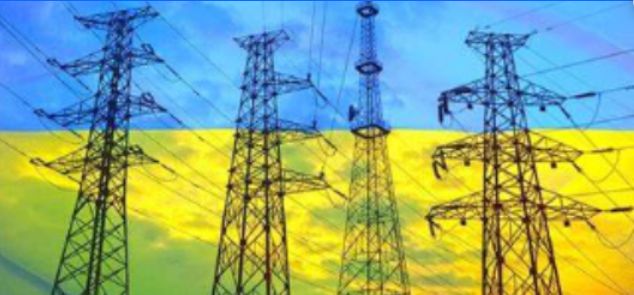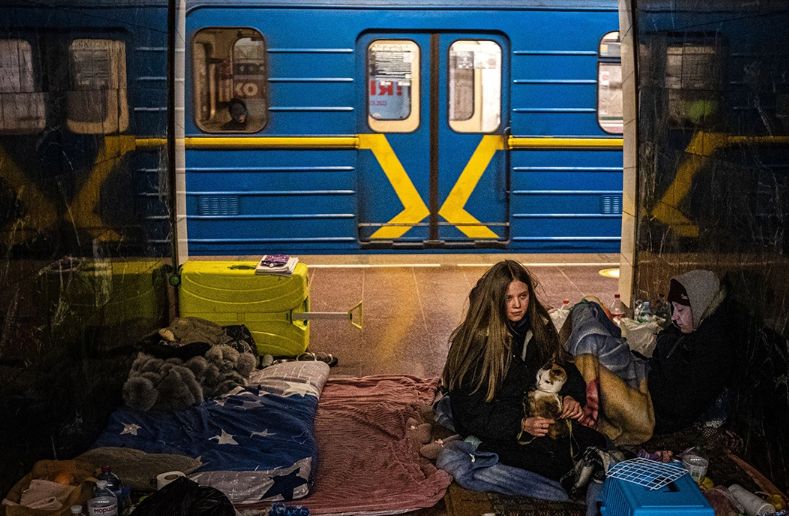By Eric Vandenbroeck
and co-workers
How The US Can Help Ukraine
Since beginning his
war in February, Putin has repeatedly told Europe that it would “freeze” without
Russian gas, an attempt to divide the EU and turn public opinion against
support for Ukraine’s struggle. He failed.
He now appears to be
attempting to do the same with Ukraine, where he repeatedly targeted
civilian air and missile strikes against
civilian targets.
Kyiv hasn’t been its
usual self for weeks. For half the day, the Ukrainian capital, known for its
cafes, bustling nightlife, and crowded cocktail dens even through a pandemic
and more than eight months of a full-scale Russian invasion, is plunged into
darkness, mostly disappearing from view except for millions of little flickers
of candlelight.
Russia, repeatedly
beaten on the battlefield, has resorted to knocking out Ukrainian power and
heat ahead of the winter. Russian missile strikes and drone attacks have
shuttered close to 40 percent of the country’s power plants.
The first shock has
been economic. Ukraine’s government fears the economy could shrink by
one-third. Some businesses in Kyiv are panicking. People who have been in Kyiv,
who have stayed in Kyiv, and who have thousands of employees are worried that
one more attack will be a week without electricity.

A former Ukrainian
economy minister Tymofiy Mylovanov has
set up makeshift shelters that officials call “warming centers,” small rooms
outfitted for emergency heating. But the makeshift effort isn’t enough to get
the city of 3 million people through the winter. “We’re talking about, you
know, 20 people, 50 people, a hundred people,” Mylovanov said.
“We’re not talking about thousands of people.” And the blackouts don’t just
mean Ukrainians are reading by candlelight. They have left millions without
water, sewage, and hot food, including children and the elderly.
Temperatures are
already hovering at or below freezing during Kyiv nights in November. Russia’s
missile strikes against the Ukrainian power grid have knocked out power to
major cities—not including the massive Zaporizhzhia Nuclear Power Plant that
has been offline for months. The increasingly dire situation has set off a mad
dash in Western capitals to prevent a further humanitarian crisis in the
cold.
Ukraine still can
generate enough electricity to meet people’s needs because demand has dropped
dramatically since Russia’s full-scale invasion in February. But Russia’s
campaign of strikes has decimated Ukraine’s ability to transfer high-voltage
power that runs through power lines to lower voltages that consumers can use.
That has also limited the ability to import energy from other regions to deal
with the problem.
On Capitol Hill,
current and former Ukrainian officials are telling anyone who will listen that
they desperately need transformers. These massive electromagnetic devices
transfer power between circuits in power stations and on railways. It’s
high-voltage transformers that are most needed. And in Ukraine, unfortunately,
we only have one manufacturer capable of producing a maximum of three
transformers every six months. After two waves of major attacks on our critical
infrastructure, we need tons of them.
But there’s no quick
fix for the transformers, leaving U.S. and Ukrainian officials to work overtime
to stave off a mass exodus, like the lines of cars out of Kyiv that preceded
Russia’s full-scale invasion. “The blackouts will be there for quite a long
time until we have new transformers,” Voytsitska
added. On the request list are mobile and secondary substations and power
switches.
Ukraine is also in
need of spare parts, boilers, and stoves, and Ukrainian officials are trying to
find space heaters that can heat destroyed rooms, homes, and school gymnasiums,
where internally displaced people have been forced to hide from Russian
bombings, to set up more makeshift warming centers. The effort extends to major
Ukrainian cities, including Kyiv, Kharkiv, Dnipro, and Zhytomyr. In Washington,
Ukrainian allies are also trying to push the message to the Swiss and British
governments.
It’s unclear how far
the requests have gone to the State Department, and the U.S. Agency for
International Development (USAID) have proceeded. Pentagon spokesman Brig. On
Tuesday, Gen. Patrick Ryder told reporters that the Biden administration
discussed providing generators, water purification systems, heaters, and other
winterization aid. USAID has pushed through about $271 million in winterization aid
to Ukraine, about a fifth of which is earmarked explicitly for Kyiv.

When Russia began its
invasion of Ukraine on 24 Feb, the 47 underground stations of Kyiv’s metro
system together sheltered around 40,000 people. Eight months later, when
Russia kicked off a new bombing campaign that is still ongoing, using cruise
missiles and Iranian exploding drones to target the Ukrainian capital and
critical infrastructure throughout the country, the stations—some located
nearly 100 meters underground—once again became a place of refuge for thousands
of Kyiv residents and their pets. But while in February, city authorities
halted rail service for nearly two months to accommodate civilians seeking
shelter, the boxy blue and yellow cars of the Kyiv Metro have continued working
throughout the near-daily air raid alerts that have resonated in the city since
10 Oct.
The Kyiv Metro has
always had two functions: first, as a transport infrastructure and second, as a
civil defense infrastructure. The rail network was built during the Soviet era,
and its stations were designed to double as bomb shelters—during a potential
NATO attack. Residents find it surreal that those same stations shield civilians from Russian missiles.
For updates click hompage here